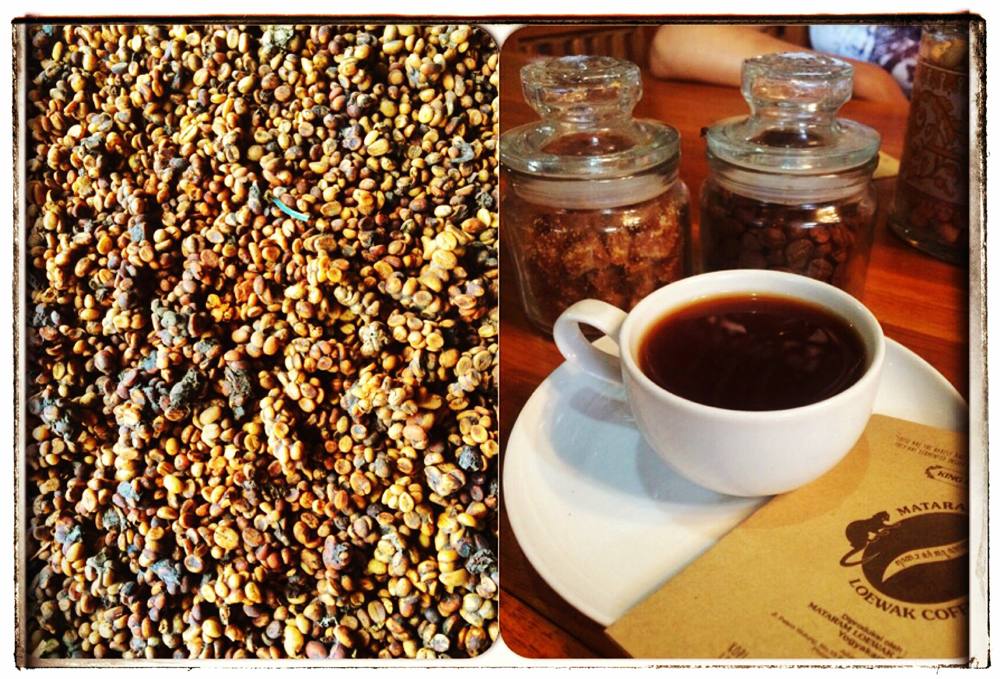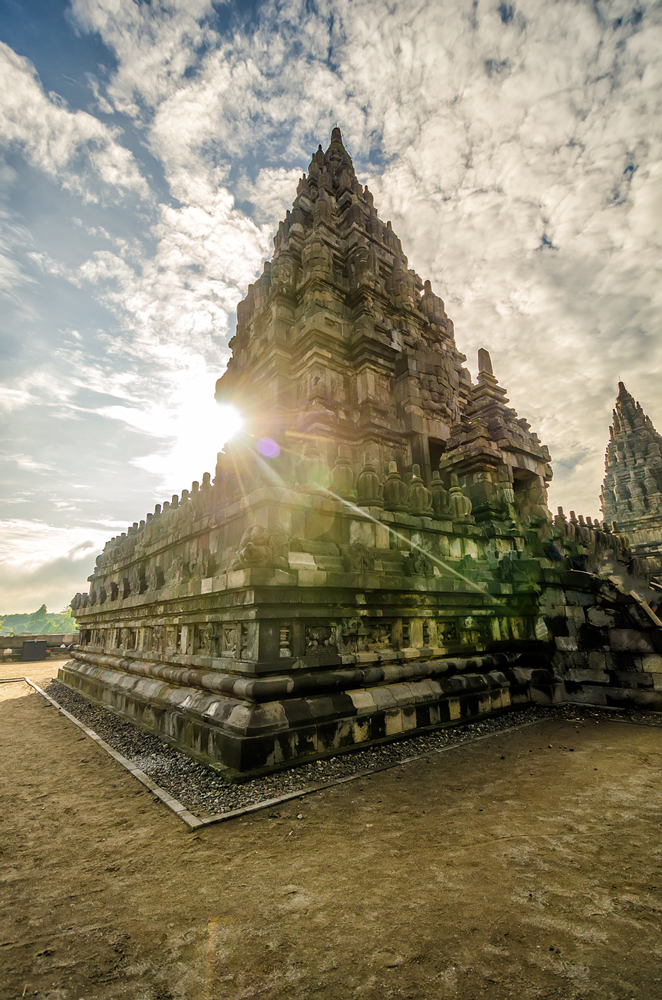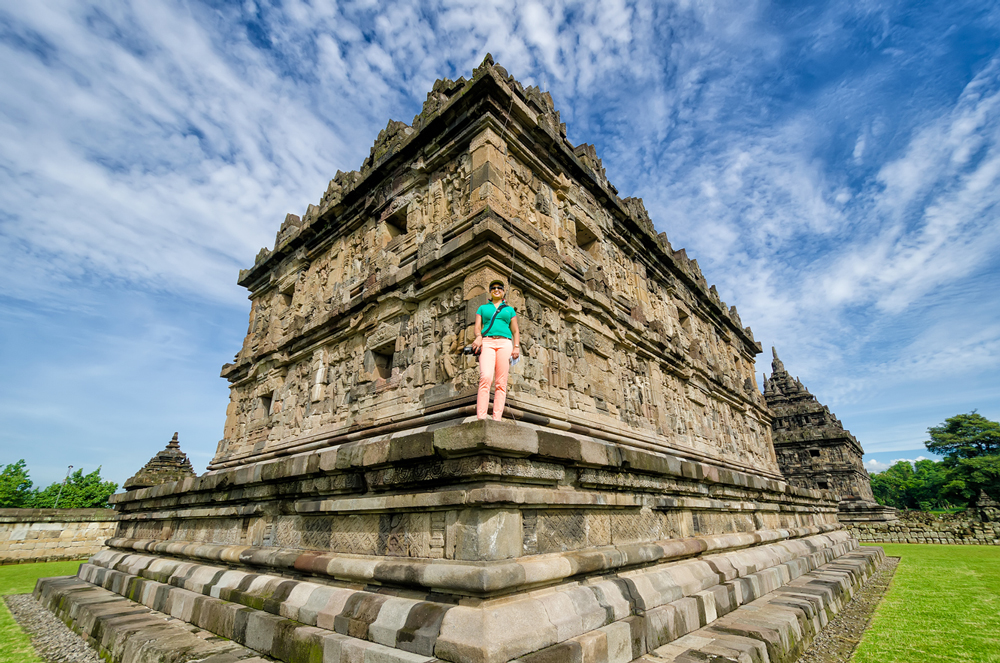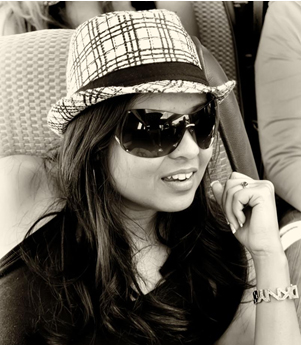I am amazed at the diversity that Indonesia has to offer: it is indeed much more than just Bali and I too, am guilty of the misnomer that Bali equals Indonesia! The adventures today, dear Wanderlusters take us to the cultural gateway of Indonesia on the island of Java: the city of Jogyakarta, or Jogya as the locals like to call it.
I love travelling. But I hate the rain. Give me the cold but as soon as it gets rainy and wet I turn into a miserable gus gus. Rain is for those days in Nairobi where I am cosy in my sanctuary at home, churning out blog posts for you guys to read. Not when I am supposed to be travelling and living my wanderlust fantasies! I say this because it is important that I be real about travel. It isn’t all sunshine and rainbows and sometimes the weather sucks and kills the joy of exploring. There are places that can be romantic when it rains, like Paris or Tuscany, but Jogyakarta is far from romantic in the rain and so my first few hours and impressions of Jogya were totally warped by the mucky rain that decided to grace us, literally upon arrival. I had in my typical fashion chalked up Jogya to be the “Siem Reap” of Indonesia but in reality it is an ordinary city, with its traffic and roads and people and as far from Siem Reap as one can get! Jogya is often treated as a pit stop en route to Borobudur, the mother of all temples but there are also some worthy temples and places dotted around its environs that make for a good couple of days of exploration. Stay with me as I delve into a couple that tickled our fancy in our short sojourn in Jogyakarya!
Jogya City
Thankfully, our day of exploring starts out much nicer than the day we arrived into the city and the morning is nice and sunny; perfect for ambling around Jogya city. We start off at the home of the Sultan of Yogyakarta: the Kraton, the palace complex where the Sultan and his family live and where you can watch cultural shows or oogle at some of the architecture. Our next stop is the former royal garden of the Sultanate known as the Taman Sari Water Palace which is a stone throw away from the Kraton. The dream behind this complex was that once the gates were shut, the entire place would be composed of nothing but water and beautiful flowers. Today there is no water and very few beautiful flowers, and looming clouds above us threatening to burst open with rain!

At the doorway of Taman Sari
Around Jogya
Java is dotted with active volcanoes and Mt. Merapi is one that is quite close to Jogyakartya. The little town of Kaliaurang is meant to have a good view of the volcano which has a permanent plume of smoke jutting out of its mouth. Given the weather, we stop at The Beukenhof restaurant and Ullen Sera art gallery to have something to eat and to wait out the rain. A bright cheery yellow, its menu has me grinning from ear to ear with the quirky quotations and sayings peppered through it. And to add a notch to its belt, it has a beautiful green garden square which looks almost like what I imagined the Secret Garden to look like. If only the weather had been good, I would have indulged my inner Frances Hodgeson Burnett and spent some time there.

Isn’t this so apt?
As luck would have it, the weather cleared up enough for us to actually see said plume of smoke emanating from Mt. Merapi and embark on a bone shattering but at the same time darn exciting jeep adventure to the summit of the mountain to catch a better glimpse of this plume and to experience a true active volcano! As usual, my imagination is running on overdrive and I envision the summit to have red hot lava bubbling away but this couldn’t be further from the truth! As we get to the top, all we see is a deep black hole with this thick plume of smoke rising from it. Worth it? As the saying goes: mountains look beautiful from a distance! True say!

Mt Merapi looks awesome from a distance!

Our jeep to explore Mt. Merapi

I’m in the back, in this bone shaker….
Kotagede: Indonesian Chocolate and Kopi Luwak
The drive out to the little village of Kotagede down narrow winding roads is really scenic. Here, we get to try two fun things: Indonesian chocolate and the famous Kopi Luwak or Civet Poop Coffee, yup, poop coffee!
Monggo Chocolate is a local chocolate factory which combines Indonesian ingredients with Belgian know how to produce beautiful, creamy chocolate with spicy undertones. You can see into the factory where you won’t find Oompah Loompahs prancing around, but you will find a clean, Swiss like production with chocolatiers wearing white coats and going about their business. Dreamer extraordinaire that I am, I am gutted to realise that my first glimpse into a chocolate factory is nothing like Charlie and the Chocolate Factory and those images of Willy Wonka and Oompa Loompahs exist only in my head!

No Oompah Loompahs…just Mr & Mrs Wanderlust here!
Onward to something that I have been dying to get behind the scenes information on: Kopi Luwak. To the world, and to me too, this is simply known as coffee made from poop: if your first experience was as bitter as mine was, then you will no doubt have preconceived notions of what this beverage ought to taste like. I first tried Kopi Luwak at a restaurant known as Lara Djongrang in Jakarta, and after tasting the real deal I can say without conviction that the folks at Lara really ripped us off! Why? Read on!
Andy, our very sleepy driver (he took a chance to catch forty winks every place we stopped!) took us to a tiny home farm where we got to see production from turd to bean to cup. Now, I know that recently the whole Kopi Luwak industry has been getting some bad press, and not unwarranted because with its label as the “most expensive” coffee in the world, of course in this day and age, there are a tonne of people who wouldn’t think twice about exploiting this concept. And as is the case with most things in this world, for every exploiter there are a handful of genuine people who use ethical means to showcase their products to the world, and our behind the scenes visit was to one such place. Mataram Kopi Luwak is a small home factory where coffee is made in small batches from free roaming civets, who come and go as they please, and are not stuck in cages and “battery farmed”.

The poop on the left and the final product on the right…Kopi Luwak!
Based in a homestead in Kotagede, this coffee factory is set on a small plantation which has its farm and coffee roasting room within its vicinity. What I found of particular interest was seeing the beans at their various stages of production. Kopi Luwak starts life as a berry on the farm, which is eaten by a Civet and then passed out in its excrement. So the beans stick out in the Civet’s turd, which is admittedly pretty gross but strangely the turd doesn’t smell like poo at all! Once the excrement has dried the bean is separated from said substance, washed, laid out to dry and finally roasted. The theory is that acid within the Civet’s digestive system removes the bitterness from the coffee bean so that when it is roasted and eventually brewed it produces a nectar like liquid as opposed to the bitter tasting stuff produced from ordinary coffee beans. Kopi Luwak is meant to be savoured as an espresso with some palm sugar to sweeten it should you need to. The nice thing about a backstage tour is that first of all, the myth is debunked by understanding and seeing for yourself how Kopi Luwak is produced, and secondly, you get to taste the coffee after seeing the production so you know it is the real deal! There is indeed no bitterness and the ensuing product is smooth, creamy and full of flavor, which puts what we drank at Lara Djongrang into the category of tar like swill and into the bucket of having been ripped off! Then again, this may or may not have been a tourist trap but it certainly felt genuine to me. We bought some coffee beans and being the cynics that we are, M and I brewed some up in our hotel room the next day and it tasted every bit as good as what we had tried at Mataram. I still have trouble convincing friends and family back home that this is amazing coffee but those that take the plunge often come back to have a second cup because their taste buds have indeed been tickled!
Temples: Candi Prambanan and Candi Plaosan
You know by now that M and I love chasing the sun. Sunrises, sunsets, anything to do with this glorious ball in the sky and we are in, but personally I think that sunrises hold so much promise: a new day, a new page on which to write a brand new story. And I love nothing better than to see the first rays of the sun gracing a spiritual place. Though I was looking forward to our trip out to Borobudur, I couldn’t resist catching sunrise at Candi Prambanan, one of the largest Hindu temples on the island of Java.

Sunrise at Candi Prambanan
Most of the complex was destroyed by an earthquake however the three main turrets that symbolize the Shiva, Vishnu and Brahma temples are intact and can be explored, best done in the early hours of the morning when there are very few people around and the structures are being graced by the gentle rays of the morning sun. Out here you cannot help but notice the lack of young couples, thanks to the local legend the curse of Rara Djonggrang which, despite the charm of the temples keeps these young unmarried lovers out for the fear that their relationship will be forever doomed! Google the legend, it is quite fun to read!

The spires of Candi Prambanan

Hanging out at the temple…
Candi Plaosan is a 10 minute drive away from Prambanan and can be explored in a much shorter time. This is one of the last Buddhist temples to be constructed in Indonesia before Hinduism and Islam took over as dominant religions and was built as a gift from a Hindu prince to his Buddhist wife.

The temple is this way!

One of the temples at Candi Plaosan
Even though M and I visit all these different complexes, I find that sometimes the history floats over right over our heads and I have started to focus on enjoying myself traipsing around the architecture and indulging in the myths and legends surrounding places versus the history, which makes for a more memorable visit. Well, fellow Wanderlusters, if you do find yourself in Jogyakarta someday I hope you do dig out my post and explore some of these places that I have rambled on about! Till next time, thank you again for spending a part of your day with me!

Exploring Candi Plaosan
WanderNuggets
-On getting there
We flew to Jogyakarta from Jakarta on Garuda Indonesian Airlines. This city was intended to be a pit stop en route to Borobudur and is often overlooked, however we had some time and opted to stay a couple of days to explore. Though there isn’t anything overly spectacular out here, given that you are in this part of the world, if you have the time then you can add some of these cultural experiences to your repertoire of travel memoirs!
-On exploring
We hired a car and driver to take us around to the various places that we wanted to visit, based on research on Indonesia and choosing those places that caught our fancy. Our car was hired through a local tour agency that we organized prior to our arrival in Jogyakarta.
-On entry fees
– Kraton: IDR 12,500 per person plus IDR 1000 for cameras.
– Taman Sari: IDR 12,500 plus IDR 2,000 for cameras.
– Merapi Jeep Tour: IDR 350,0000 to rent a jeep plus driver to take you to the summit and back.
–Candi Prambanan: USD 25 per person
– Candi Plaosan: No entry fee.
*At the time of publishing this blog post these prices were correct however please use these as a guide only and do your own research before you travel out here.
-On other nuggets:
You can see in my pictures that I am perched on the actual temples and wearing shoes, however this is allowed, or may have been when we visited so this is something you need to check when you go because rules are always changing.











Awesome article. l love it